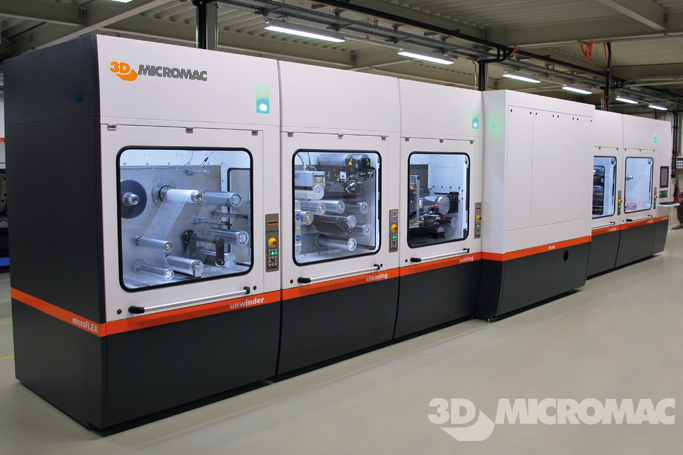In the field of sensing, organic, flexible, large-area electronic solutions open up completely new possibilities. From photodetectors in the IR, visible, or X-ray spectrum to gas, pressure, or temperature sensors, they can convince with functionality and easy integration. Formerly packaged in rigid and bulky casings, they now fit seamlessly in textiles, paper, or plastic films. Heavy and expensive devices – such as NIR-detectors – become small, lightweight, and cost-effective, potentially revolutionizing health care and agricultural technology.
Solution-based processing
Solution-based processing is similar to printing with a conventional ink jet printer or a printing machine. The organic materials are dissolved in a liquid solvent, just like the color pigments in normal printer ink are dissolved in a liquid. Following this analogy, the solution is also referred to as ‘electronic ink’. This ink – carefully dosed – is applied to the substrate. The solvent is volatile, so once it has evaporated only the organic semiconductor remains on the substrate as a thin film.
Solution-based processing is the simplest and technologically the most field-tested method for the fabrication of thin material films. It is suitable for processes in which films in the region of several micrometers or thicker are needed and where only one or very few layers of organic semiconductor are to be deposited. For components which comprise several clearly separated layers, specific combinations of organic semiconductors and solvents have to be used so that one film can be deposited onto an already existing one without etching this first film and thus causing an unwanted mixing of the two materials. Polymers (very large molecules) are often used here since they are less susceptible to solvents once they have been deposited. Processing on flexible substrates in a ‘roll to roll’ procedure is more easily possible, similar to newspaper printing machines.
In times of digitalization and increasing connectivity, miniaturization and better integration of sensors become core aspects of their functionality. Pressure and temperature sensors on surgical gloves help during operations, NIR-detectors measure the ripeness of crops, and gas detectors in mobile phones or clothing assess air composition and issue warnings e. g. for dangerously high amounts of nitrogen oxides. Organic sensors enable the incorporation of invisible, unnoticeable functionality, anywhere.
































